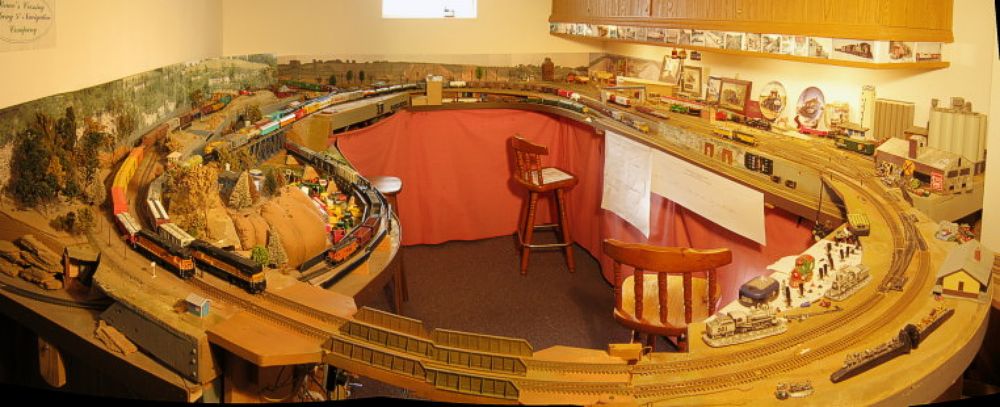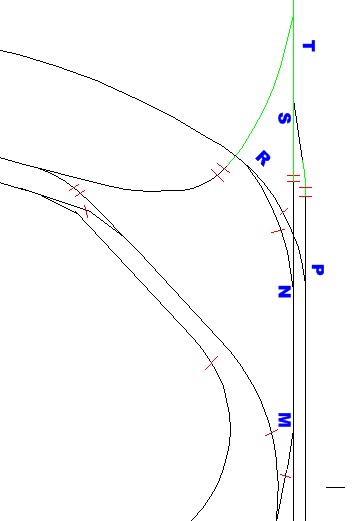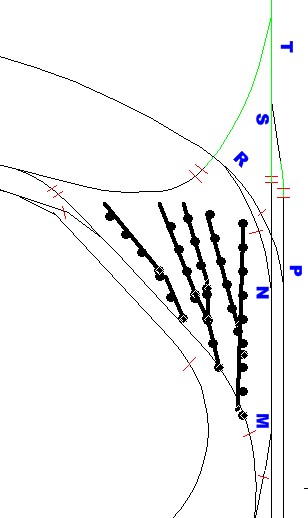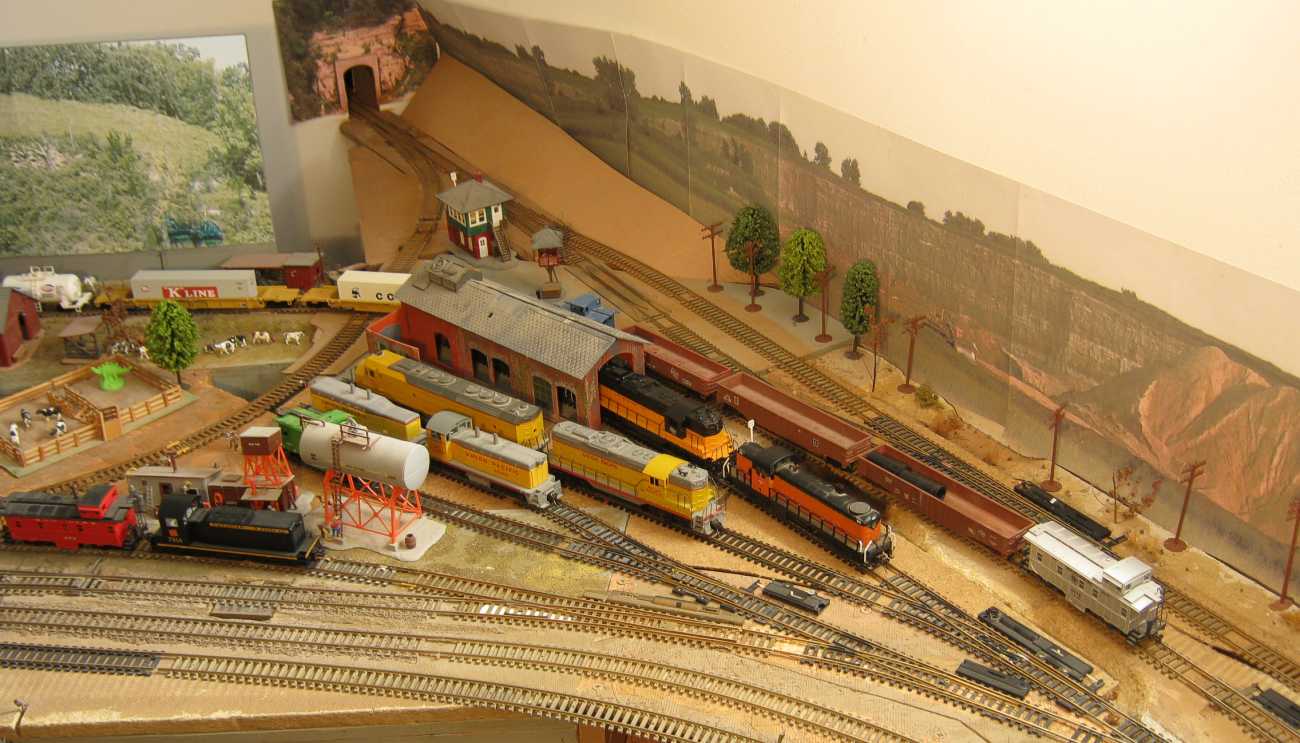|
I haven't made a page about the heart of my model railroad in a long time. This is the original train area in this house, its been like this 20 years, with some extra tracks squeezed in every few years This space is 11 x 14 feet. The picture has some distortion, it's wide angle and stitched from three pictures. |

|
Ron H of Medford and Matt C of New London visited after the Artic Run Model RR show in Stevens Point. The trains ran good, and I didn't know my railroad was being rated by how many derailments occurred (3). If I would have known that, I would have parked some questionable cars that I had been working on.
|
|
At the time, I mentioned I never had space for an engine facility, such as a turntable and roundhouse. I just put power on a shelf under the train board so there was some home for it.
Then I had a brainstorm one day when the sun was shining through the basement window and lit up a quiet spot of the railroad. |
Here's the track plan before and after the engine facility was added.
It's a complicated wye junction, with a siding crossing through a leg.
 e .
e .

.
|
I used my old Snap Switches and Y's and broken parts from old train flea markets 20 years ago. I mounted one switch machine 'backwards' to save space and keep the engine tracks an inch longer than normal.
I cut the switch power jumpers and turned them all into selective control with power through the switch points This Summer, I should wave an air brush over it to give the track and ties a light coat of rail brown.
The engine house was salvaged from Jared's portable module over 20 years ago; The sand drying house and diesel fuel tank were a Revell model kit that I bought when I was in 7th grade, in the 1960's, from Nelson's Shoe and Hobby store in Marshfield, Wis. That store is long gone. Half of the 'land' is cardboard just laid over holes and gaps and valleys in the wood framework, and is meant to be removable in case I have to gain access to a hidden track that is underneath all this. .
Some of the locomotves are broke or just dummies.
|
|
Dispatcher, we can't make the top of the hill.
Ok, set out your dead weight (the dummy locomotives), |
.
|
But then I found a use for dummy locomotives, besides just looking good. I add them to helper engine sets. I count on the dead weight to decrease the push so the slack action in the train is controlled. The lead engine tops the hill and gets to pulling again. The pusher set is still on the hill, and slowing down from its own weight. The pusher slowly drops back as the train gets over the hill. I run both the train and the pusher from the same throttle. And I don't have DCC, this is old fashioned power. I can watch the slack and pushing action in the couplers along the train. And when the neutral point of the coupler slack gets to the rear of the train, the helper just drops away very gradually. This method needs the pusher to not be hard coupled to the train, so use a delay lap on a Kadee coupler or a dummy coupler that can push but not lock the knuckle. If the pusher stopped dead from any cause, it could put the brakes on the rear of the train. And since my hills have some curves, the cars could be tipped in.
|
|
I still don't have a turntable, but since this facility is built inside of a wye, I can turn locomotives, or send the helpers in the correct direction to assist a train. |
Here are the links to my two other pages about the model railroad.
The Pleasant Valley extension of my model railroad in 2019
Scale Model Plans for a Milwaukee Road Pontoon Float Swing Bridge
(this is why there is the Navigation Company name in the model railroad )
. . . . . to My Main Index Page on the TrainWeb site.
This page was filmed in Febuary 2020.